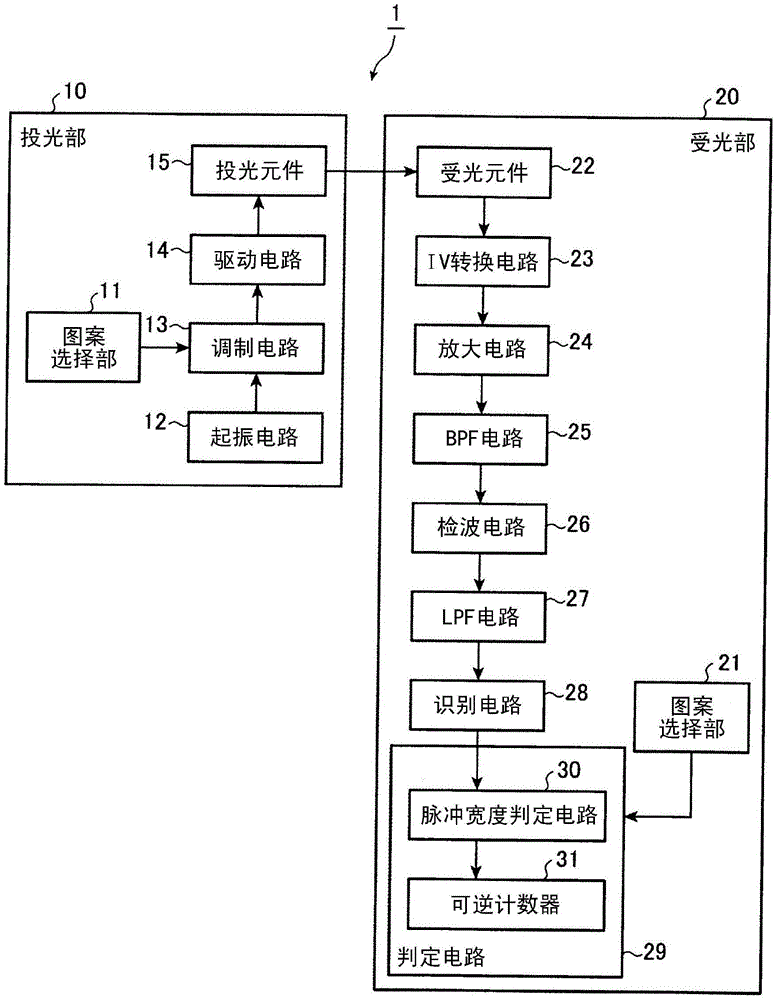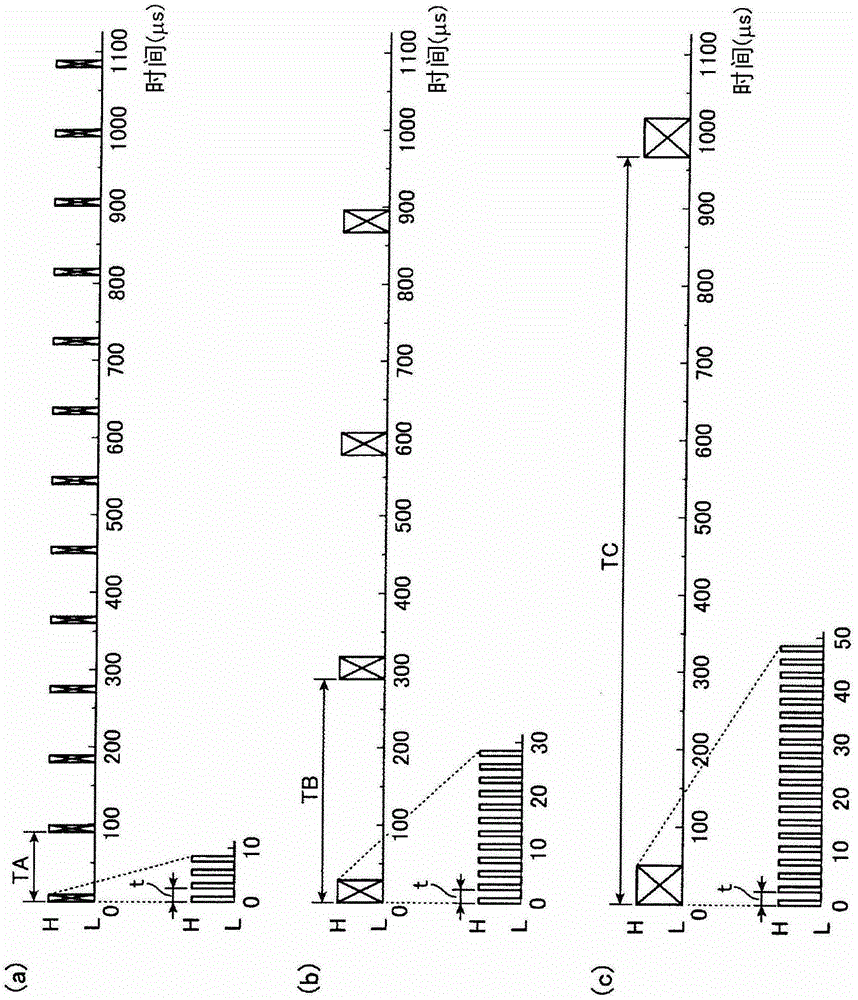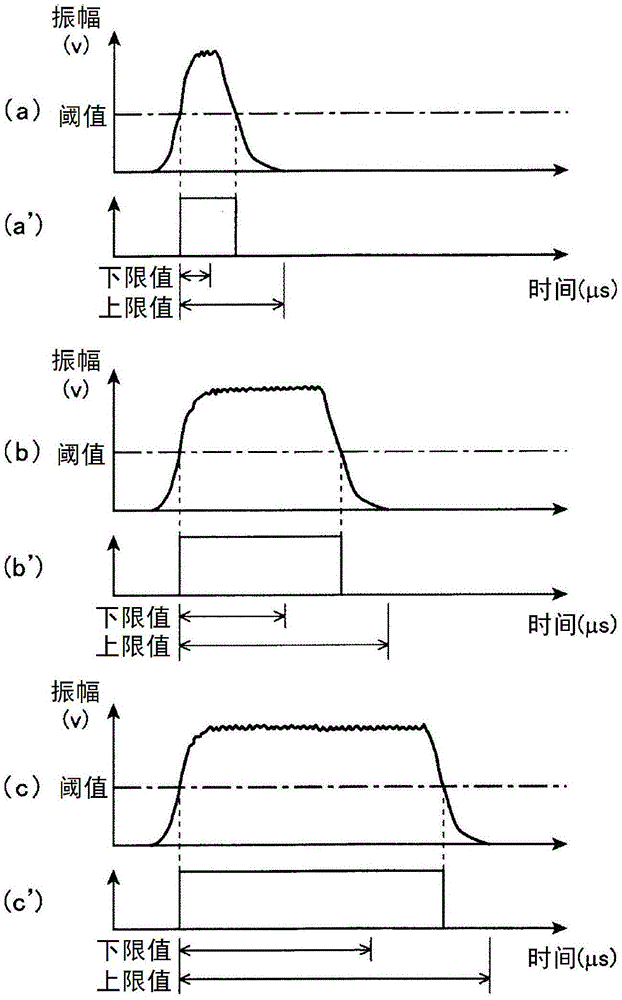Photoelectric switch
A photoelectric switch and light-receiving part technology, applied in electronic switches, electrical components, optical device exploration, etc., can solve the problem that the light-receiver cannot distinguish which light-emitting device the light signal comes from, and achieve the effect of preventing and reducing misjudgments
- Summary
- Abstract
- Description
- Claims
- Application Information
AI Technical Summary
Problems solved by technology
Method used
Image
Examples
Embodiment approach 1
[0048] figure 1 The shown photoelectric switch 1 is a transmissive photoelectric switch including a light projecting part 10 and a light receiving part 20 sandwiched between detection areas in a face-to-face state. Whether there is a detection target object in the area.
[0049] In Embodiment 1, a configuration will be described assuming that a maximum of three photoelectric switches 1 are connected and used. The three photoelectric switches 1 (referred to here as photoelectric switches 1A~1C) are composed of three light projecting parts 10 with different light emitting pulse periods and pulse widths, and based on the received light period and pulse width, the pair is automatically Three light receiving units 20 for discriminating whether to emit light or to interfere with light are constituted.
[0050] Here, self-luminescence refers to light received by the light receiving unit 20 of the photoelectric switch 1A from the light projecting unit 10 of the same photoelectric s...
PUM
 Login to View More
Login to View More Abstract
Description
Claims
Application Information
 Login to View More
Login to View More - R&D
- Intellectual Property
- Life Sciences
- Materials
- Tech Scout
- Unparalleled Data Quality
- Higher Quality Content
- 60% Fewer Hallucinations
Browse by: Latest US Patents, China's latest patents, Technical Efficacy Thesaurus, Application Domain, Technology Topic, Popular Technical Reports.
© 2025 PatSnap. All rights reserved.Legal|Privacy policy|Modern Slavery Act Transparency Statement|Sitemap|About US| Contact US: help@patsnap.com



